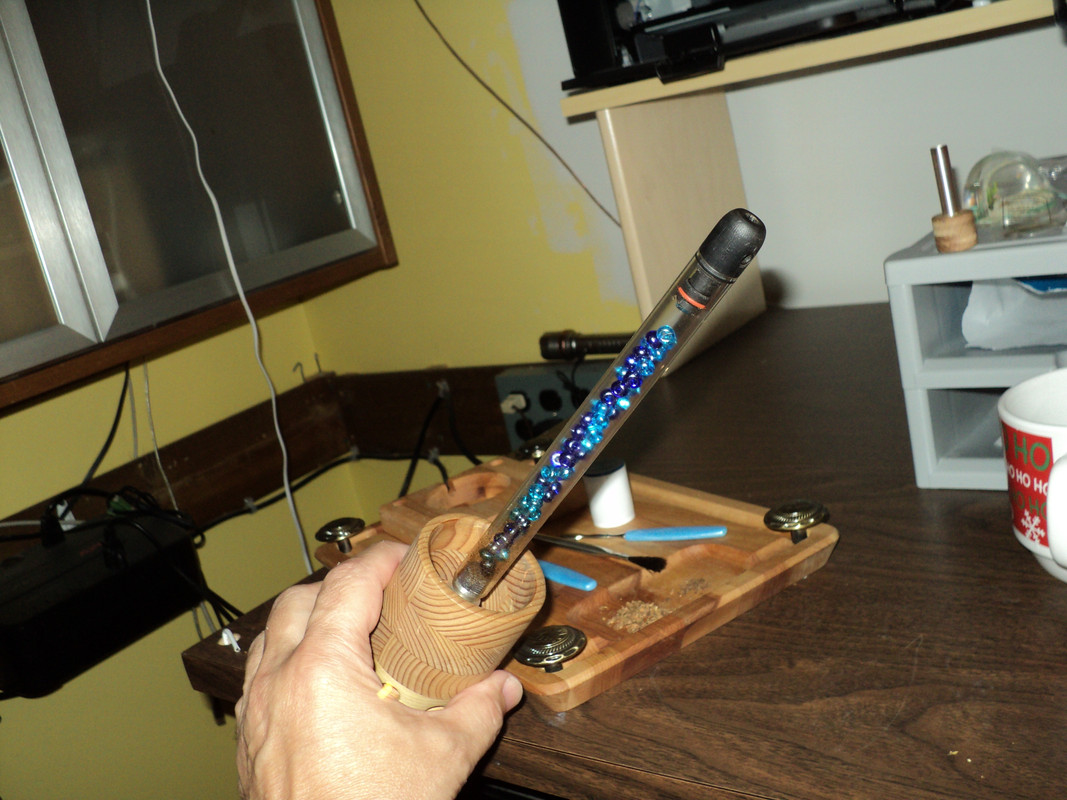blokenoname
DIY Log Dabbler 😁🪵💪💨💨💨
@Squonk
Very nice and pragmatic setup there! Great work! Thank you

Also thank you for your kind words
So, looks like we built our respective units following very much the same principles there, apart from only minor differences.
I'm running at 12v here, while you're opting for 120v
My bulb is a Osram Halostar Starlight, 12v/10w, G4 two pin socket with 9mm OD, which allows for the leaner 11mm/10mm OD/ID stainless steel tubing for a heater cover and port. Heater cover is usually screwed into place, though I've just used another washer and an expanding clip-ring, to fasten it in this unit for faster access. Air intake is via two narrow slits situated at the sides near the base of the tube.
The off the shelf ceramic sockets I use are made for 12v and therefore also a bit leaner, than the 120v socket you're using there. It sits within a 20mm OD cork base, which is held by friction fit in a corresponding hole at the bottom of my heater well, its teflon insulated wiring then soldered to the 12V DC jack, fitting your typical 5,5mm/2,1mm barrel plug.
Here also some more detail pics:



Temp regulation goes either via a 12v equivalent of your rotary dimmer there or a small buck converter with a digital display, showing the applied voltage. Also no PID here. We judge the temps just by fatness of the clouds produced
Very nice and pragmatic setup there! Great work! Thank you


Also thank you for your kind words

So, looks like we built our respective units following very much the same principles there, apart from only minor differences.
I'm running at 12v here, while you're opting for 120v
My bulb is a Osram Halostar Starlight, 12v/10w, G4 two pin socket with 9mm OD, which allows for the leaner 11mm/10mm OD/ID stainless steel tubing for a heater cover and port. Heater cover is usually screwed into place, though I've just used another washer and an expanding clip-ring, to fasten it in this unit for faster access. Air intake is via two narrow slits situated at the sides near the base of the tube.
The off the shelf ceramic sockets I use are made for 12v and therefore also a bit leaner, than the 120v socket you're using there. It sits within a 20mm OD cork base, which is held by friction fit in a corresponding hole at the bottom of my heater well, its teflon insulated wiring then soldered to the 12V DC jack, fitting your typical 5,5mm/2,1mm barrel plug.
Here also some more detail pics:



Temp regulation goes either via a 12v equivalent of your rotary dimmer there or a small buck converter with a digital display, showing the applied voltage. Also no PID here. We judge the temps just by fatness of the clouds produced

Last edited:


 Basically, a heat radiator that provides surface area and air flow.
Basically, a heat radiator that provides surface area and air flow.





